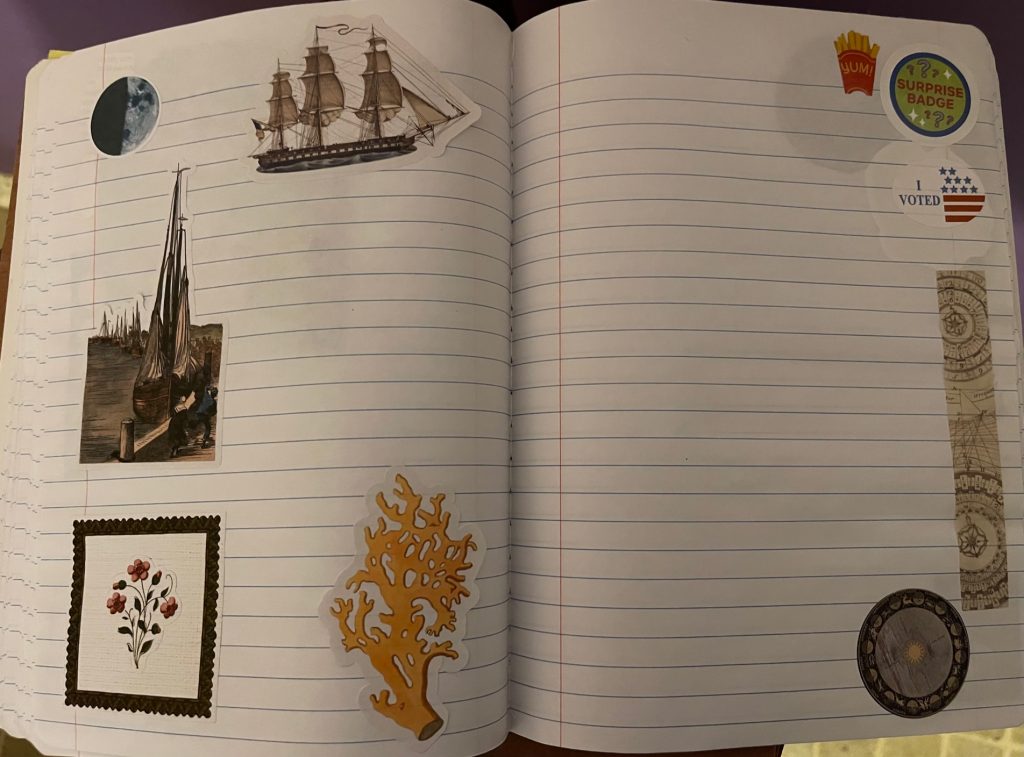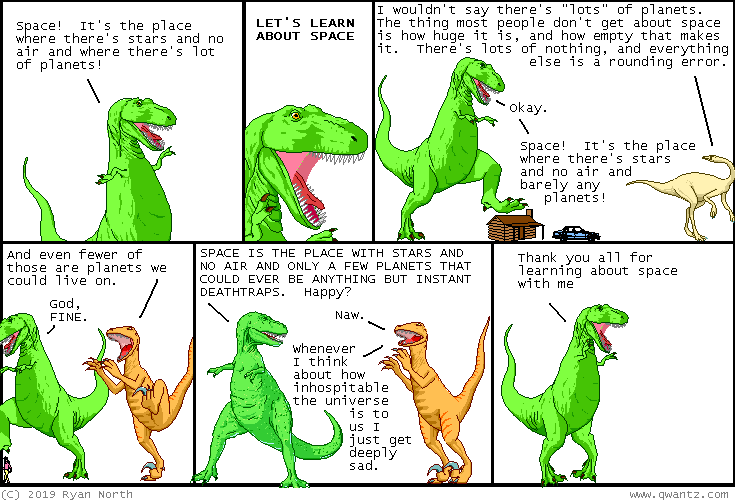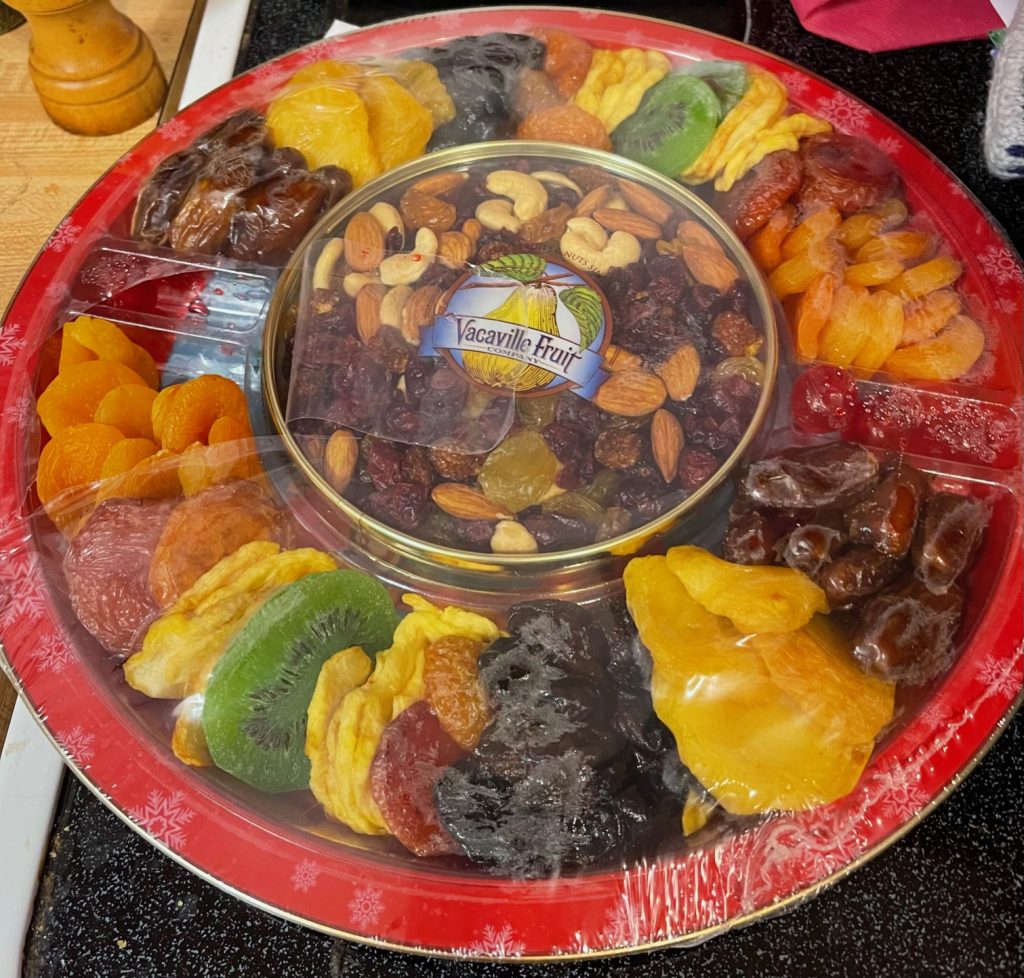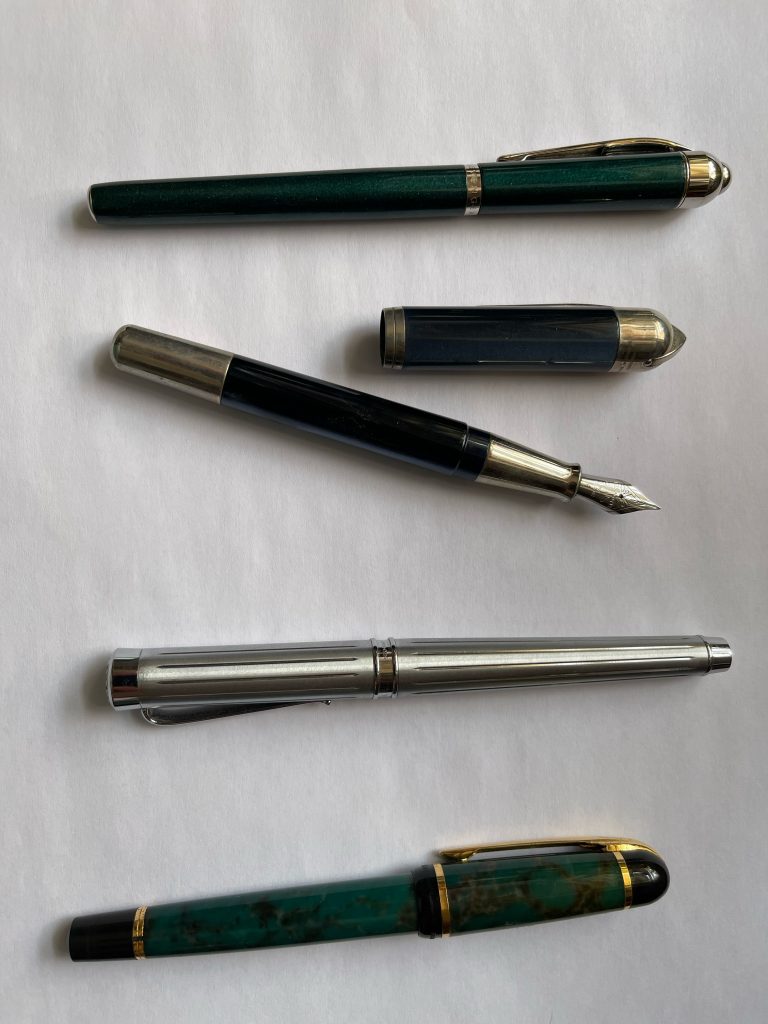The Game Master.
 I have a painting that was made by three artists. All three signed it but I wish I had a fourth signature: that of the person responsible for making it happen. His name was Rembert Parker.
I have a painting that was made by three artists. All three signed it but I wish I had a fourth signature: that of the person responsible for making it happen. His name was Rembert Parker.
I’d been introduced to Dungeons & Dragons by my friend John and, early in our freshman year of high school, he invited me to go to a weekend D&D convention with him in Evansville. His father drove us and when we got to the hotel John introduced me to Rembert—an older guy who was just a little taller than me, with lanky hair, round glasses, and a friendly smile. John had met Rembert at a previous convention and they’d become friends but then, as I quickly realized, Rembert was friends with everybody. In the few minutes we chatted at least two dozen people said “Hey Rembert!” as they passed by. Rembert was also one of the organizers of the convention, so it wasn’t just because of his outgoing nature that everyone knew him.
Then John and I got invited to join a D&D game and we went off to a hotel room with a group of strangers. The game was part one of a module, called something like Road To Verangia, that would be played over the weekend. At the end of it everyone would vote for the top three players who’d then advance to part two. Those who didn’t advance could find another game.
The next morning all the attendees gathered in one of the hotel conference rooms. Those who’d advanced—including my friend John—went off to play Road To Verangia part two. Alone and unsure what to do with myself I sat down at a table and was soon joined by a friendly group of strangers. We chatted a bit and then a guy came over and said, “All right, looks like everybody’s here. I’ll be your Dungeon Master today. Let’s start the game.”
“What’s this one called?” someone asked.
“It’s called Certain Death To Your Characters” the Dungeon Master laughed.
Oh, thank goodness, I thought. For a moment I’d been afraid it was going to be a repeat of the previous night’s game.
Character sheets were passed around. I looked down at mine and realized I’d been given the same cleric I’d played the night before. I panicked and looked around, but the room was empty. Not knowing what else to do I just played dumb, and stayed dumb, not using my knowledge of what was to come to my or anyone else’s advantage.
Later that day I’d go to lunch with John and his father and they’d talk about a guy who’d been in the previous night’s game and who’d tried to sneak in to a repeat of part one and how terrible it was that some people just couldn’t obey the rules.
“I won’t be surprised if Rembert kicks him out,” said John’s father.
“And he’ll never come back to a convention where Rembert’s in charge,” added John.
I chewed my chicken sandwich glumly, certain that my own crime would be uncovered, wondering if I should throw myself on Rembert’s mercy immediately. But I decided to keep playing dumb instead. And, somehow, over the whole weekend, it went undiscovered—or no one said anything if they noticed.
I went to a lot of conventions after that, most of them organized by Rembert. He and John were still friends but I kind of avoided him. He was a good guy and fun to talk to but, silly as it seemed even at the time, I still carried a slight air of guilt. Over time I just assumed he forgot who I was. Everybody knew Rembert but he couldn’t be expected to keep track of everyone.
Every convention had an art room and on Saturday night there’d be an art auction. I liked a lot of the paintings and would usually bid on one or two. After losing a bid on one someone tapped me on the shoulder. I turned around. It was Rembert.
“Hey Chris, I noticed you liked that painting. I’ll talk to the artist and see if he’ll do one for you.”
This was surprisingly generous and, because Rembert was involved, a couple of other artists got interested and all three of them collaborated on the painting. I’m sorry I’ve forgotten the names of all three artists, although they signed the back as well as putting their names on the front so I can always open the frame if I ever get it appraised.

I’ve never forgotten Rembert, though, so I was sad when John told me he’d passed away earlier this month.
I didn’t realize Rembert had a blog where he wrote mostly about old and mostly forgotten songs “that the radio seldom plays”. Here’s his last entry:
Sadly, I’ve been in the Hospital with Cancer for a few weeks.
I hope to return to daily posts within a few weeks!
Funny and optimistic to the end. When John and I talked I brought up the painting, and John, who still goes to gaming conventions regularly, said that the ones Rembert organized were small—at most there’d be about two hundred people, which made it easy for Rembert to know the artists, and everyone else, unlike modern gaming conventions that have thousands of attendees. There used to be a stereotype of D&D players as socially awkward loners, but the small conventions really showed how untrue that was. We all got to know each other, even if it was just in passing, although they were just big enough that some noob who’d never been to one before could accidentally play the same game twice and have their mistake be forgotten while they were remembered.
Hail and farewell, Rembert. You were, as Nat King Cole sang, unforgettable in every way.

 Most of what I write starts out as handwritten drafts in composition books. It’s a habit I’ve stuck to for decades. I like the physical nature of writing by hand, and the security of pen and ink. When I got my first computer, a Hewlett-Packard with an amber monitor and two floppy disk drives, I was amazed by how fast it allowed me to write and edit, but then, after about eighteen months, it started making a thunk-thunk sound when I tried to save what I’d written, so if I really wanted to save it I’d have to recopy it all by hand. I still like word processors and they’ve come a long way and I’ve never had to deal with thunk-thunk again but I still like old fashioned writing by hand.
Most of what I write starts out as handwritten drafts in composition books. It’s a habit I’ve stuck to for decades. I like the physical nature of writing by hand, and the security of pen and ink. When I got my first computer, a Hewlett-Packard with an amber monitor and two floppy disk drives, I was amazed by how fast it allowed me to write and edit, but then, after about eighteen months, it started making a thunk-thunk sound when I tried to save what I’d written, so if I really wanted to save it I’d have to recopy it all by hand. I still like word processors and they’ve come a long way and I’ve never had to deal with thunk-thunk again but I still like old fashioned writing by hand.



 At the end of every year I stop and reflect on how we define a year. On Earth it takes us a little over three-hundred and sixty-five days to make a complete orbit of the Sun, but our planet is in constant motion, so the decision to mark the year’s end in the middle of winter seemed to me, when I was young, strangely arbitrary. And in fact many cultures celebrate the “new year” at different times—in most cases because the lunar calendar is at least as widely used as the solar calendar.
At the end of every year I stop and reflect on how we define a year. On Earth it takes us a little over three-hundred and sixty-five days to make a complete orbit of the Sun, but our planet is in constant motion, so the decision to mark the year’s end in the middle of winter seemed to me, when I was young, strangely arbitrary. And in fact many cultures celebrate the “new year” at different times—in most cases because the lunar calendar is at least as widely used as the solar calendar.


 It’s been too long since I got out my fountain pens. I was already thinking that even before I read
It’s been too long since I got out my fountain pens. I was already thinking that even before I read  Just in the month of October I had four pieces rejected by various publications. It’s not hard to do the math and realize that’s an average of one per week. Back in the last days of 2019 I set myself a resolution for 2020, even before I realized what a year that would be, that I’d submit at least one piece per month. I’ve pretty much kept to that goal although October was exceptional and significantly raised the average. The problem, of course, is that more submissions also means more rejections, and although I was thrilled to have a piece accepted by
Just in the month of October I had four pieces rejected by various publications. It’s not hard to do the math and realize that’s an average of one per week. Back in the last days of 2019 I set myself a resolution for 2020, even before I realized what a year that would be, that I’d submit at least one piece per month. I’ve pretty much kept to that goal although October was exceptional and significantly raised the average. The problem, of course, is that more submissions also means more rejections, and although I was thrilled to have a piece accepted by 

